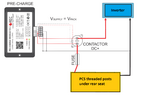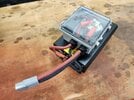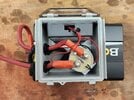Thanks for sharing. A couple questions ...
Why did you feel this pre-charge module was needed, rather than the "sparkless" connectors mentioned above (XT90AS, or Protek RC SQ8) ? The idea is to slowly charge the caps on the inverter's DC input, so there's not a sudden current draw on the Tesla, possibly triggering errors, right ?
Why only 1000 watt inverter ? Did you decide the Tesla's low-voltage system couldn't safely and continuously supply more ? On our Leaf, 1000 watts is also what I'm using, but when the refrigerator goes into auto-defrost it shuts down - most inconvenient.
How did you connect the inverter to your loads ? Generator inlet on the main breaker panel (as I describe above) ?





